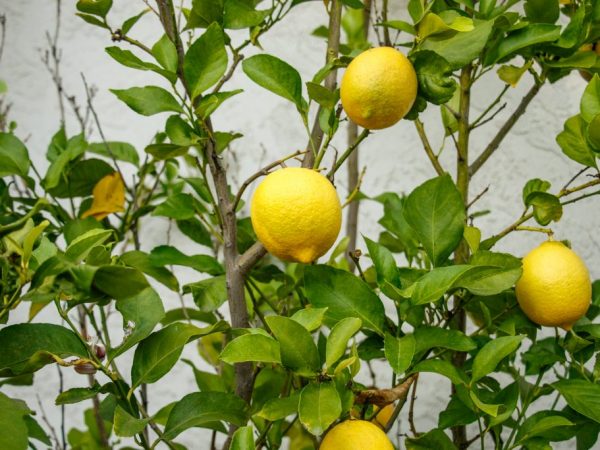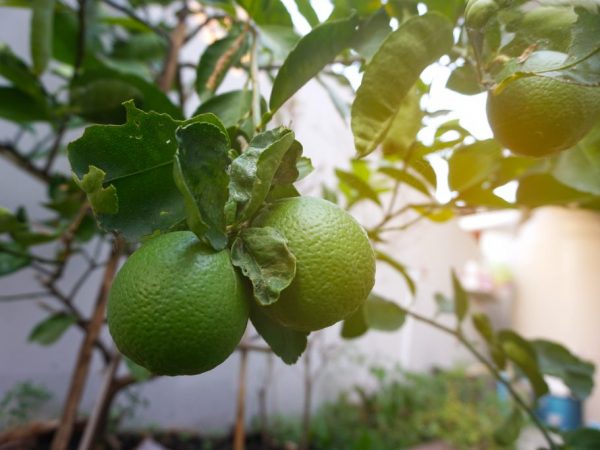Reasons for curling lemon leaves
It is not difficult to grow a lemon tree at home, but it requires special care and conditions. Sometimes, due to non-compliance with the rules for growing a plant, problems begin with the leaves: they turn yellow, dry, fall off. At the same time, it is impossible to immediately determine why the leaves of the lemon are curling.

Reasons for curling lemon leaves
Causes of leaf curling
The lemon tree is loved by flower growers because it stays green throughout the year and is able to bear fruit. But in order for the plant to fulfill its purpose, it must be properly cared for. Sometimes small mistakes in care lead to the fact that the leaves of the lemon curl.
Improper care is not the only reason for this phenomenon, there are others:
- damage by insect pests;
- poor mineral nutrition;
- lack of fresh air;
- infectious diseases.
The most common causes of curling lemon tree leaves are poor growing and maintenance conditions: improper watering, inappropriate temperature and humidity levels in the room, drafts, poor soil and improper fertilization.
In order to choose the right methods of dealing with the problem, it is necessary to find out why the leaves of the lemon curl and what factors affect this. Having determined the cause, one cannot hesitate to eliminate it, since a neglected problem quickly destroys the plant. If the treatment is started on time, the tree will quickly recover and start up new greenery.
Improper care
If the leaves of a homemade lemon curl inward or upward, turn yellow, dry or fall off, he does not like leaving. Abundant and frequent watering or, conversely, weak and rare moisture, lack of fresh air, poor-quality soil, rare and poor fertilization or its absence - all this leads to curling of greenery, poor growth and flowering of lemongrass.
Improper watering
Due to improper watering, the leaves of the indoor lemon tree not only curl and change shape, but also fall off. This happens if you water the plant with cold or unsettled water.
Before watering, tap water must be allowed to settle for several days in order for chlorine to disappear from it. This element has a detrimental effect on the citrus plant. It is also important that the water reaches room temperature.
Moistening with a vinegar solution has a positive effect on the state of the green mass. Add a few drops of vinegar to 1 liter of settled water. The tree is sprayed as the soil dries, especially during the hot season. Do not allow the earth to dry out, watered lemongrass on time and in moderation. In summer, this procedure is carried out more often than in winter: every day or every other day.
Humidification in summer and winter
To avoid curling the foliage, in the summer, the indoor tree is sprayed from a spray bottle every day. If the weather is too hot, and in the room where the lemon is located, the air temperature is high, it is humidified twice a day.Otherwise, even with frequent watering, the greens will dry out and fall off. Also in the summer, lemongrass is watered from the shower a couple of times a month.
In winter, due to the turned on central heating, the air in the house becomes dry, which also leads to a deterioration in the state of the greenery. If it is noticeable that the leaves of the lemon tree are twisted, it is immediately provided with high humidity. Humidifiers help a lot. It is also helpful to move the tree pot away from the batteries and place a large container of water next to it.
Lack of fresh air

Leaves can curl from lack of air
Sometimes lemon leaves folded due to lack of fresh air. In winter, the room is ventilated, and in the summer, the pot with the plant is taken out into the street or onto the balcony. At the same time, drafts and temperature changes are monitored: they harm the tree. Do not place it near doors and balconies. Lemongrass also does not tolerate direct sunlight.
The appearance of pests
Lemon leaf curling also occurs due to insect pests affecting the tree.
Spider mites
Spider mites usually attack the underside of young greenery and feed on their juices. A characteristic feature of their appearance is the cobweb. Insects settle under it. At the first stage of infection, the cobwebs are few, the tips of the leaves are slightly curled, small yellow spots are visible on the leaf blade. In the process of the spread of pests, the green mass is damaged, and the plant begins to dry out.
Shield
The signs of the appearance of the scale insect are the shine and stickiness of the sheet plate. These pests infect young shoots by feeding on their sap. As a result of their vital activity, all the greens begin to turn yellow, curl and dry out. If you do not start the fight against parasites in time, the tree will quickly die.
Thrips and aphids
These insects also cause the leaves to curl and slow down the growth of the lemon tree. They settle on the underside of the leaf plate, suck the juices out of it, as a result of which the greens are deformed, discolored and dries up. If the pests are not eliminated, they will destroy the tree and move to other plants.
Lack of micronutrients
If the leaves of a lemon are curled up, this may be due to a lack of trace elements necessary for full growth: calcium, magnesium, copper or boron. The accompanying signs help to determine which element the plant lacks:
- with a lack of calcium, the green mass loses its color, young shoots gradually dry out;
- with a lack of magnesium, they not only curl, but also turn pale, become variegated;
- with a deficit of copper, the foliage first increases in size, darkens, its tips begin to bend, then it curls;
- in the complete absence of copper, the green mass is noticeably reduced in size, discolored and twisted, and the edges of the sheet plate are deformed;
- with a small amount of boron, the leaves wither, curl inward, sometimes transparent spots appear on them or veins expand.
To prevent such a problem, the lemon tree is periodically fed with special fertilizers. It is recommended to do this every few months or more often, depending on the condition of the plant.
Lemon Infectious Diseases
Lemon leaf curling is also associated with infectious diseases. The most common diseases are black fungus and gommosis. With a soot fungus disease, a black mold appears on the plant, which quickly spreads and worsens the condition of the tree. The appearance of gommosis is accompanied by the cracking of the trunk and the release of vitreous resin from it.
There are several lemon tree treatment options. Usually, infectious diseases are fought with the help of special drugs that are sold in flower shops. They are bred with water and sprayed with them throughout the plant.
Fighting diseases is real and folk methods.
Necessary conditions for growing
So that there are no problems with the lemon tree, proper conditions are provided for it. Make sure that the plant does not overheat in the sun and is not in direct sunlight for a long time. The air temperature in the room should be on average 20 ° C. They try to maintain a stable temperature and avoid fluctuations in it.
It is better to purchase soil for lemon in specialized stores. At the bottom of the pot, it is imperative to make drainage 3-5 cm high. Sand or wood ash is used for its preparation, but it is better to combine them. Experts advise to insulate the pot so that the roots are always warm.
Lemon is fertilized with special solutions every 7-10 days. Fertilizers are applied the next day after watering.
Conclusion
Leaf curling on a lemon tree is common. This happens for a variety of reasons. To begin with, determine the factors that caused this problem, and only then begin to solve it.


